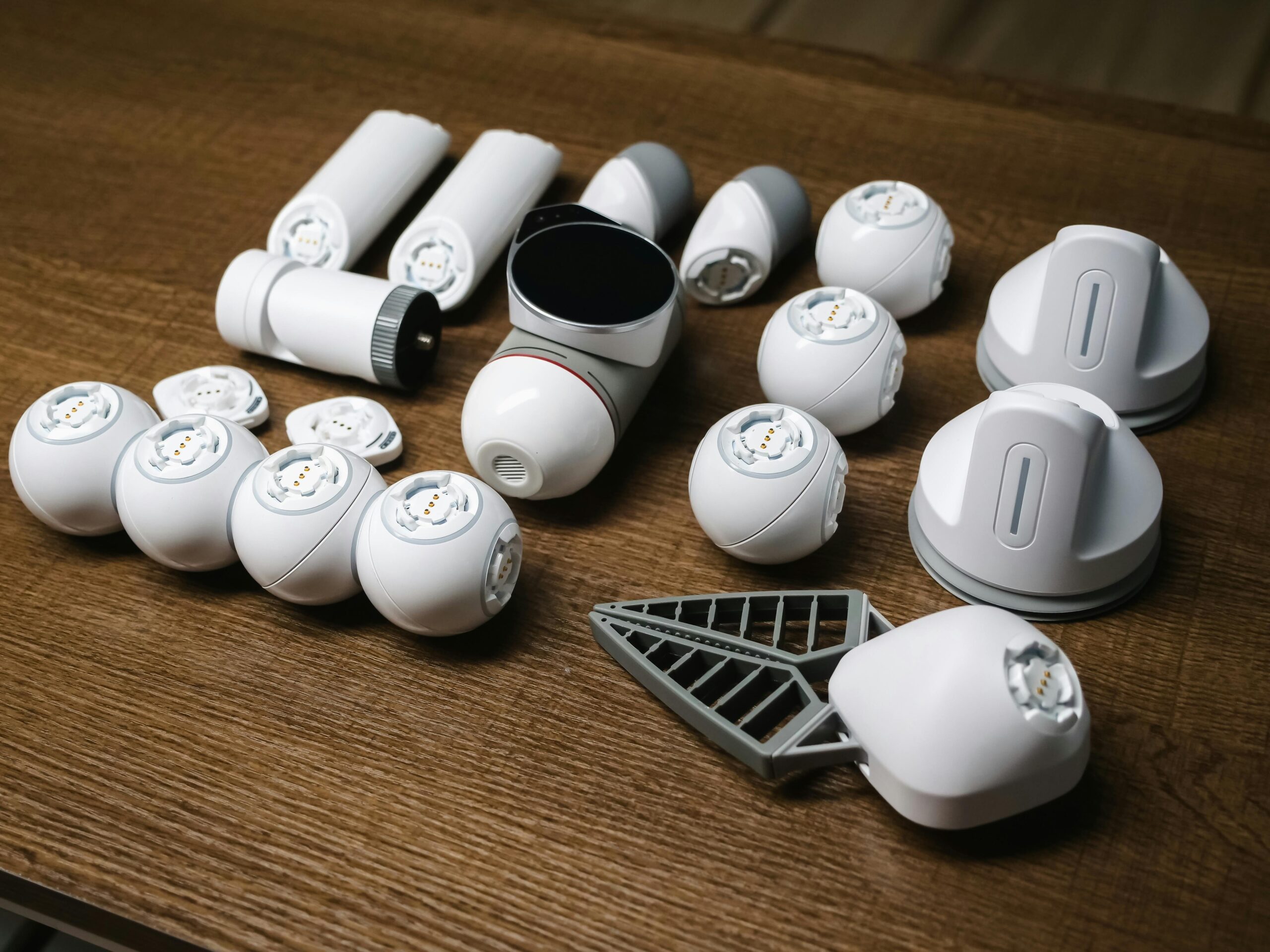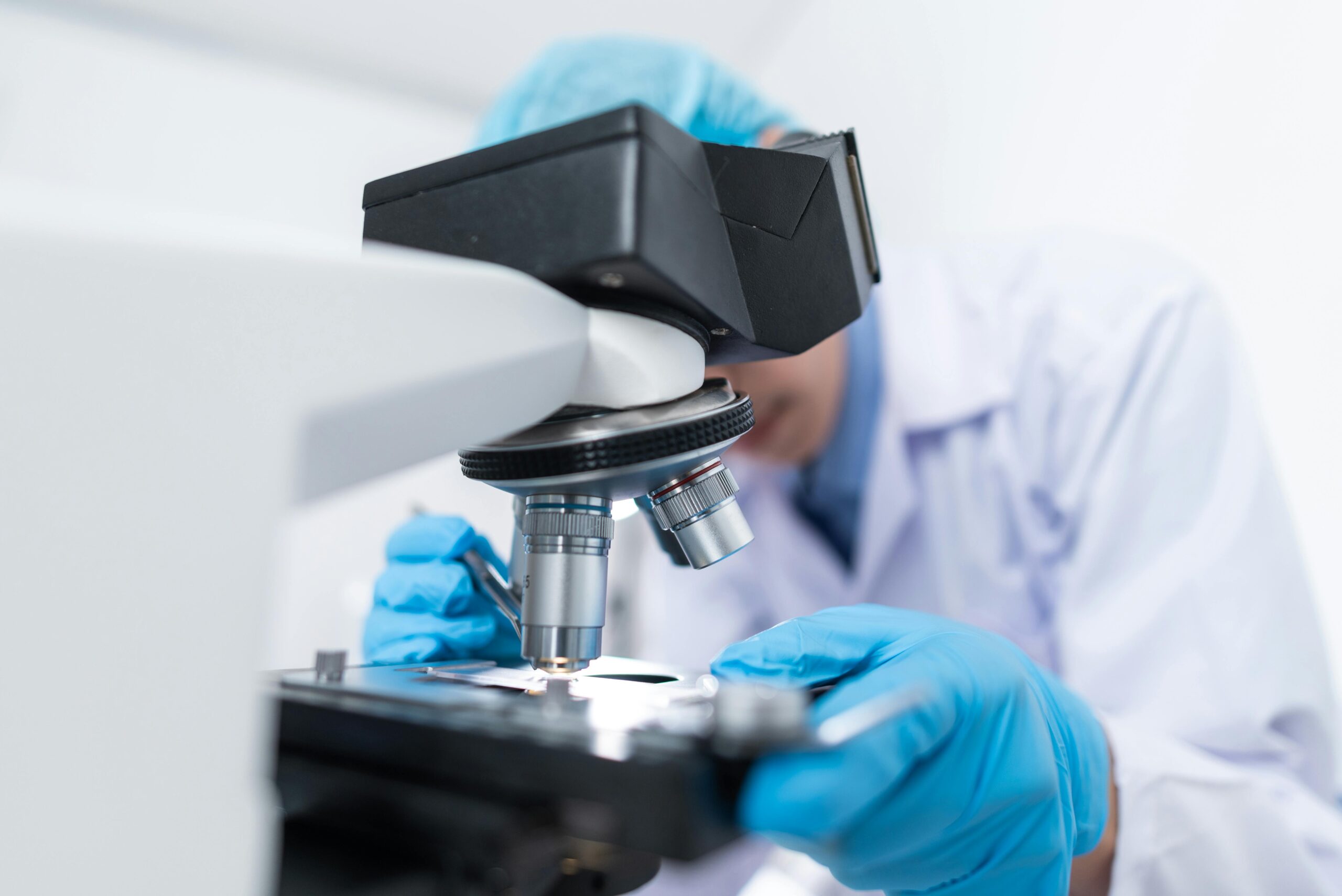The convergence of materials science and healthcare is creating unprecedented opportunities for medical innovation. Bioactive materials and smart hydrogels are emerging as transformative technologies that promise to revolutionize how we treat diseases, heal wounds, and enhance human health.
These advanced biomaterials represent a paradigm shift from passive medical devices to intelligent, responsive systems that interact dynamically with biological tissues. As we stand at the threshold of a new era in regenerative medicine and personalized healthcare, understanding the potential of these materials becomes crucial for healthcare professionals, researchers, and patients alike.
🔬 Understanding Bioactive Materials: The Foundation of Smart Healthcare
Bioactive materials are substances specifically designed to elicit controlled biological responses when introduced into the body. Unlike traditional inert biomaterials that merely provide structural support, bioactive materials actively participate in biological processes, promoting healing, tissue regeneration, and therapeutic outcomes.
These materials work by interfacing with living tissues at the molecular level, triggering specific cellular responses that facilitate healing and regeneration. The interaction between bioactive materials and biological systems creates a synergistic relationship where the material enhances the body’s natural healing mechanisms rather than simply replacing damaged tissue.
The most common bioactive materials include bioactive glasses, calcium phosphate ceramics, certain polymers, and composite materials that combine multiple beneficial properties. Each category offers unique advantages for specific medical applications, from bone regeneration to drug delivery systems.
Key Characteristics That Define Bioactive Materials
Biocompatibility stands as the primary requirement, ensuring that materials can exist within biological environments without causing adverse reactions. Beyond mere compatibility, bioactive materials must demonstrate osteoconductive properties for bone applications, allowing new tissue to grow along their surface.
Biodegradability represents another critical feature, enabling materials to gradually dissolve as natural tissue replaces them. This controlled degradation eliminates the need for secondary surgeries to remove implants and allows for seamless integration with host tissues.
The surface chemistry of bioactive materials plays a pivotal role in determining their interaction with cells and proteins. Specific surface modifications can enhance cell adhesion, proliferation, and differentiation, ultimately improving therapeutic outcomes.
💧 Smart Hydrogels: The Intelligent Response Systems
Smart hydrogels represent a revolutionary class of soft materials that combine high water content with the ability to respond to environmental stimuli. These three-dimensional polymer networks can undergo reversible volume changes or property modifications in response to specific triggers, making them ideal candidates for advanced medical applications.
The intelligence of these materials lies in their ability to sense and respond to biological signals such as pH changes, temperature variations, enzymatic activity, or the presence of specific biomolecules. This responsiveness enables hydrogels to deliver drugs precisely when and where needed, adapt to changing physiological conditions, and provide real-time therapeutic interventions.
Types of Stimuli-Responsive Hydrogels
Temperature-responsive hydrogels undergo phase transitions at specific temperatures, making them ideal for injectable drug delivery systems. These materials remain liquid at room temperature for easy administration but solidify at body temperature, forming a stable depot for sustained drug release.
pH-sensitive hydrogels respond to the acidic or basic conditions found in different body tissues or disease states. This property proves particularly valuable for targeted drug delivery to tumor sites, which typically exhibit lower pH than healthy tissues.
Enzyme-responsive hydrogels degrade or change properties in the presence of specific enzymes, allowing for highly targeted therapeutic interventions. This approach enables precision medicine strategies where treatments activate only in diseased tissues expressing particular enzymes.
🏥 Clinical Applications Transforming Patient Care
The practical applications of bioactive materials and smart hydrogels are rapidly expanding across multiple medical specialties. From orthopedics to oncology, these materials are addressing previously intractable clinical challenges and improving patient outcomes significantly.
Regenerative Medicine and Tissue Engineering
Bioactive scaffolds created from these advanced materials provide structural frameworks that guide tissue regeneration. In bone repair applications, bioactive glasses and ceramics integrate with natural bone tissue while promoting new bone formation through the release of ionic dissolution products.
Cartilage regeneration benefits from hydrogel scaffolds that mimic the natural extracellular matrix, providing mechanical support while delivering growth factors that stimulate chondrocyte proliferation. These constructs maintain the hydrated environment essential for cartilage health while gradually degrading as new tissue forms.
Skin wound healing applications utilize bioactive hydrogels that maintain moisture balance, prevent infection, and deliver growth factors directly to wound sites. The material’s transparency allows for visual monitoring without removing dressings, reducing infection risk and improving patient comfort.
Advanced Drug Delivery Systems 💊
Smart hydrogels enable unprecedented control over drug release kinetics, moving beyond simple sustained release to truly intelligent delivery systems. These materials can maintain therapeutic drug concentrations for extended periods, reducing dosing frequency and improving patient compliance.
Pulsatile drug delivery becomes possible with multi-responsive hydrogels that release medications in response to circadian rhythms or disease-specific biomarkers. This approach proves particularly valuable for conditions requiring time-dependent dosing, such as cardiovascular diseases or hormonal disorders.
Localized chemotherapy delivery using injectable hydrogels concentrates cytotoxic drugs at tumor sites while minimizing systemic exposure. This targeted approach reduces side effects and potentially improves treatment efficacy by maintaining higher local drug concentrations.
🔍 Innovative Features Driving Medical Breakthroughs
The capabilities of bioactive materials and smart hydrogels extend far beyond their basic functional properties. Researchers continue discovering new applications and refining existing technologies to address complex medical challenges.
Self-Healing Properties
Recent developments in self-healing hydrogels introduce materials that can autonomously repair damage caused by mechanical stress or enzymatic degradation. This self-repair capability extends the functional lifetime of implanted devices and maintains therapeutic efficacy despite changing physiological conditions.
The mechanisms underlying self-healing include reversible chemical bonds, physical interactions, and dynamic polymer networks that reform after disruption. These properties prove especially valuable for load-bearing applications where materials experience repeated mechanical stress.
Antimicrobial Functionality
Incorporating antimicrobial agents into bioactive materials addresses one of the most significant challenges in healthcare: preventing device-related infections. Silver nanoparticles, antibiotic-releasing systems, and inherently antimicrobial polymers all contribute to reducing infection rates associated with medical implants and devices.
Smart hydrogels can release antimicrobial agents in response to bacterial presence, providing on-demand infection control without continuous drug exposure that might promote resistance. This intelligent approach maintains a therapeutic balance between preventing infection and preserving beneficial microbiota.
⚡ Emerging Technologies and Future Directions
The field of bioactive materials and smart hydrogels continues evolving rapidly, with emerging technologies promising even more sophisticated healthcare solutions. Integration with digital health technologies, artificial intelligence, and advanced manufacturing techniques opens new possibilities for personalized medicine.
4D Printing and Programmable Materials
Four-dimensional printing technology creates structures that change shape or function over time in response to environmental stimuli. This approach enables the fabrication of patient-specific implants that adapt to individual anatomy and physiology, improving integration and long-term outcomes.
Programmable hydrogels manufactured through 4D printing can deploy in minimally invasive procedures, then expand or reconfigure to fill defect sites precisely. This capability reduces surgical trauma while ensuring optimal fit and function.
Bioelectronic Interfaces
Conductive hydrogels bridge the gap between electronic devices and biological tissues, enabling new possibilities for biosensing, neural interfaces, and electroceuticals. These materials combine the mechanical properties of soft tissues with electrical conductivity, creating seamless interfaces for medical devices.
Applications include improved electrocardiogram electrodes, neural recording devices, and implantable sensors that monitor physiological parameters continuously. The soft, conductive nature of these hydrogels reduces inflammatory responses compared to traditional metallic electrodes.
🌍 Global Impact and Healthcare Accessibility
The democratization of advanced bioactive materials and smart hydrogels holds potential for addressing global health disparities. As manufacturing techniques improve and costs decrease, these technologies become increasingly accessible to healthcare systems worldwide.
Low-cost bioactive glasses and simple hydrogel formulations already benefit patients in resource-limited settings, providing effective treatments for bone defects, chronic wounds, and other conditions that previously required expensive interventions. Continued innovation focuses on developing robust materials that require minimal infrastructure for storage and application.
Sustainability Considerations
Environmental sustainability increasingly influences biomaterial development, with researchers exploring natural polymers and biodegradable formulations that minimize ecological impact. Chitosan, alginate, and other naturally derived materials offer excellent biocompatibility while supporting circular economy principles.
The biodegradability of smart hydrogels eliminates concerns about long-term accumulation in the body or environment. As these materials complete their therapeutic function, they degrade into non-toxic byproducts that the body can process naturally.
🎯 Overcoming Current Challenges and Limitations
Despite tremendous progress, several challenges remain in translating bioactive materials and smart hydrogels from laboratory concepts to clinical realities. Regulatory pathways for these complex materials require careful navigation, as their dynamic behavior and biological activity demand comprehensive safety and efficacy data.
Manufacturing scalability presents another significant hurdle, particularly for patient-specific or highly customized formulations. Developing reproducible manufacturing processes that maintain material quality while reducing costs remains a priority for widespread clinical adoption.
Long-term stability and storage requirements pose practical challenges for healthcare facilities. Some smart hydrogels require specific storage conditions to maintain their responsive properties, necessitating infrastructure investments that may limit accessibility in certain settings.
🚀 Accelerating Innovation Through Interdisciplinary Collaboration
The continued advancement of bioactive materials and smart hydrogels depends on collaborative efforts spanning multiple disciplines. Materials scientists, biomedical engineers, clinicians, and regulatory experts must work together to translate promising concepts into safe, effective medical products.
Academic-industry partnerships accelerate technology transfer, bringing laboratory discoveries to market more rapidly. These collaborations combine fundamental research expertise with commercial development capabilities, ensuring that innovations reach patients efficiently.
Patient involvement in the development process ensures that new technologies address real clinical needs and align with patient preferences. User-centered design approaches create medical solutions that improve not only clinical outcomes but also quality of life and treatment acceptance.
📊 Measuring Success: Clinical Outcomes and Economic Impact
The true value of bioactive materials and smart hydrogels manifests in improved patient outcomes, reduced healthcare costs, and enhanced quality of life. Clinical studies consistently demonstrate superior healing rates, reduced complications, and shorter recovery times compared to conventional treatments.
Economic analyses reveal that while initial material costs may exceed traditional options, the overall healthcare expenditure often decreases due to reduced complication rates, fewer revision surgeries, and shorter hospital stays. This value proposition strengthens as manufacturing scales and costs decline.
Patient satisfaction metrics show significant improvements when smart materials enable less invasive procedures, faster recovery, and better functional outcomes. These quality-of-life improvements represent tangible benefits that extend beyond purely clinical measures.

💡 The Path Forward: Realizing the Full Potential
The revolution in healthcare enabled by bioactive materials and smart hydrogels continues accelerating as our understanding deepens and technologies mature. The convergence of materials science, biotechnology, and digital health creates opportunities for transformative innovations that were unimaginable just decades ago.
Investment in research infrastructure, training programs, and regulatory frameworks will determine how quickly these technologies reach their full potential. Governments, healthcare organizations, and private sector entities must collaborate to create environments that foster innovation while ensuring patient safety.
Education plays a crucial role in preparing the next generation of scientists, engineers, and clinicians to work with these advanced materials. Interdisciplinary training programs that combine materials science, biology, and clinical medicine will produce professionals capable of driving continued innovation.
The integration of artificial intelligence and machine learning with biomaterial design accelerates discovery by predicting material behaviors and optimizing formulations computationally before laboratory synthesis. This approach reduces development timelines and costs while increasing the likelihood of clinical success.
As we look toward the future, bioactive materials and smart hydrogels stand poised to fundamentally transform healthcare delivery, making treatments more effective, personalized, and accessible. The journey from laboratory curiosity to clinical standard represents one of the most exciting frontiers in modern medicine, promising improved outcomes for millions of patients worldwide. The convergence of scientific innovation, clinical need, and technological capability creates an unprecedented opportunity to revolutionize healthcare and build a truly smarter, healthier future for all. 🌟
Toni Santos is a biotechnology storyteller and molecular culture researcher exploring the ethical, scientific, and creative dimensions of genetic innovation. Through his studies, Toni examines how science and humanity intersect in laboratories, policies, and ideas that shape the living world. Fascinated by the symbolic and societal meanings of genetics, he investigates how discovery and design co-exist in biology — revealing how DNA editing, cellular engineering, and synthetic creation reflect human curiosity and responsibility. Blending bioethics, science communication, and cultural storytelling, Toni translates the language of molecules into reflections about identity, nature, and evolution. His work is a tribute to: The harmony between science, ethics, and imagination The transformative potential of genetic knowledge The shared responsibility of shaping life through innovation Whether you are passionate about genetics, biotechnology, or the philosophy of science, Toni invites you to explore the code of life — one discovery, one cell, one story at a time.




